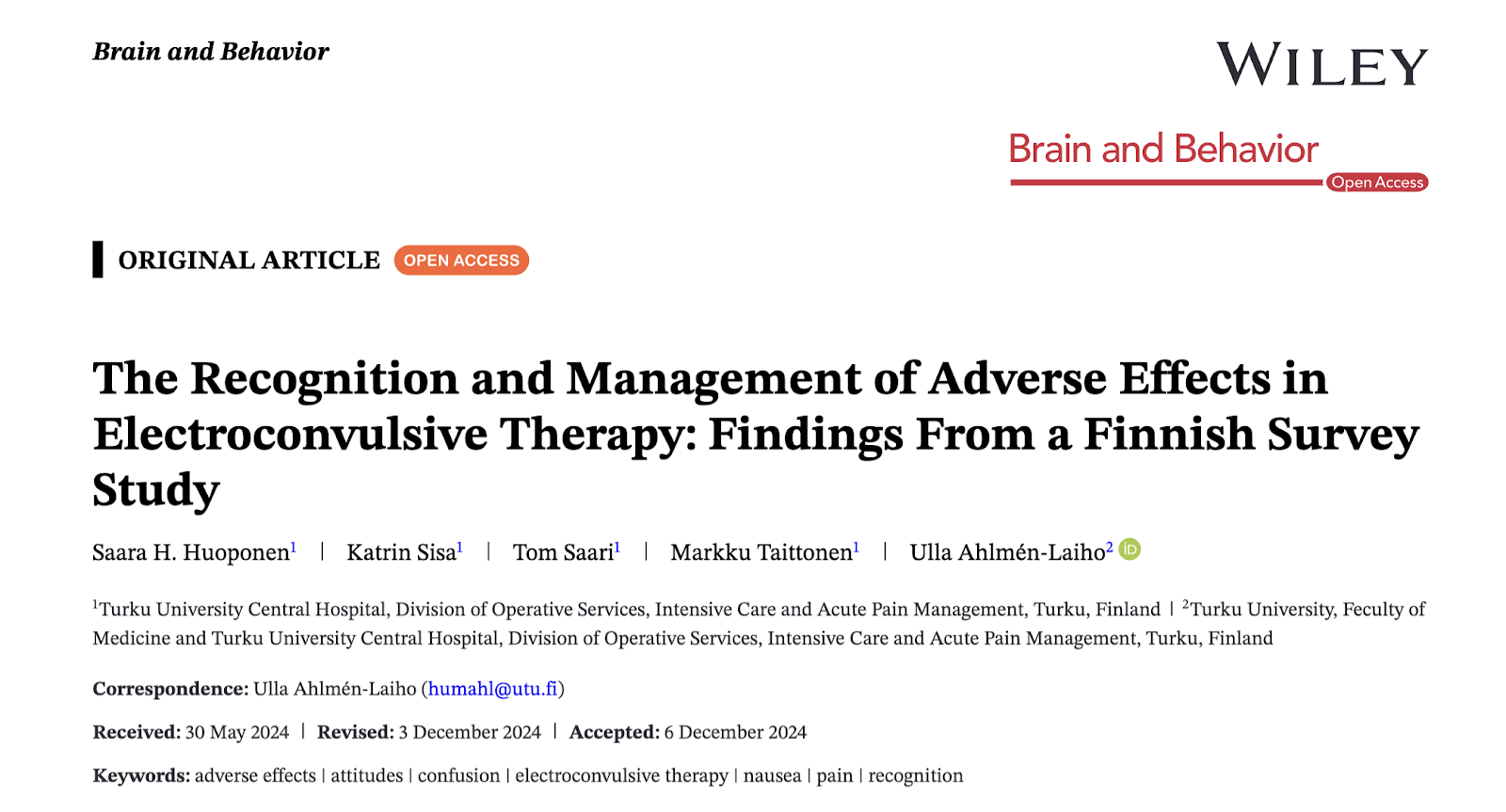The Recognition and Management of Adverse Effects in ECT: Findings From a Finnish Survey Study
Out on PubMed, from researchers in Finland, is this study:
The Recognition and Management of Adverse Effects in Electroconvulsive Therapy: Findings From a Finnish Survey Study.
Brain Behav. 2025 Jan;15(1):e70227. doi: 10.1002/brb3.70227.PMID: 39829102
Aim: The aim of the study was to survey the observed incidence of adverse effects (AEs) related to electroconvulsive therapy (ECT) in Finnish neuromodulation units, as well as to explore what medical interventions are used to prevent and treat them in those units.
Methods: An electronic survey was conducted among Finnish neuromodulation units at the end of 2022. The survey included 35 questions related to AEs and their prevention and/or treatment in the responding units' ECT patient populations.
Results: Our survey reached 19 out of 26 units in Finland, with 17 units completing the full questionnaire. Headache, myalgia and postictal confusion (PIC) emerged as the most frequently reported AEs. Nausea and high blood pressure were reported less often. Only a few units reported AEs known to be rare, such as accidental awareness during general anesthesia and the aspiration of gastric contents. However, there was considerable variation in the recognition and treatment of those ECT-related AEs the diagnosis of which depends more on patients' self-reporting, including headache, myalgia or nausea. Five units (29%) reported frequent or occasional headache or myalgia and four units (24%) reported occasional nausea experienced by their patients, but these AEs were addressed pharmacologically in those units neither by prophylaxis nor by treatment. This raises concern about whether these AEs are perceived as an insignificant issue in delivering ECT treatment, thus requiring no intervention, or if those AEs should be better recognized and and managed more actively.
Conclusions: AEs related to ECT treatment are common, but some still appear poorly recognized and treated. Regarding treatment adherence, minimizing potential AEs whenever feasible can be considered important. A thorough preoperative assessment of patients is required to identify possible risk factors for AEs. An objective and structured evaluation tool for recognizing adverse effects in patients undergoing ECT treatment would be useful.
Keywords: adverse effects; attitudes; confusion; electroconvulsive therapy; nausea; pain; recognition.
The article is here.
And from the text:
Here is an article from Finland with survey results mostly about common adverse events in ECT. It's a small dataset from a small country, but the message is universal and big: we should be sure to make patient comfort a top priority.
It is certainly a shame when a seriously ill patient ends their ECT course too soon, because of preventable side effects. In the past, I have mistakenly referred to these side effects as "nuisance" side effects, to distinguish them from side effects that are safety issues, but now recognize that to the patient, they can be much more than a nuisance.
Kudos to our Finnish colleagues, for this contribution to the ECT literature.






Comments
Post a Comment